Video Pipeline
The dVRK community is fairly heterogeneous, each site has different needs and hardware available. The goal of this page is to list the different options and solutions used on different sites. If you are a member of the dVRK community, feel free to contribute to this document.
This is the most common endoscope found on Classic/Standard full da Vinci system. The camera heads come with a motorized mechanism for focus. To process the raw video signals, there are two CCUs (Camera Control Units), usually bolted to the video tower. One of the CCU model used is the Panasonic GP US742 (at least in the US). The video outputs on the back of the CCUs are all analog and the simplest option is to use the S-Video connection. On US system, the signal is NTSC. See also Panasonic brochure (pdf).
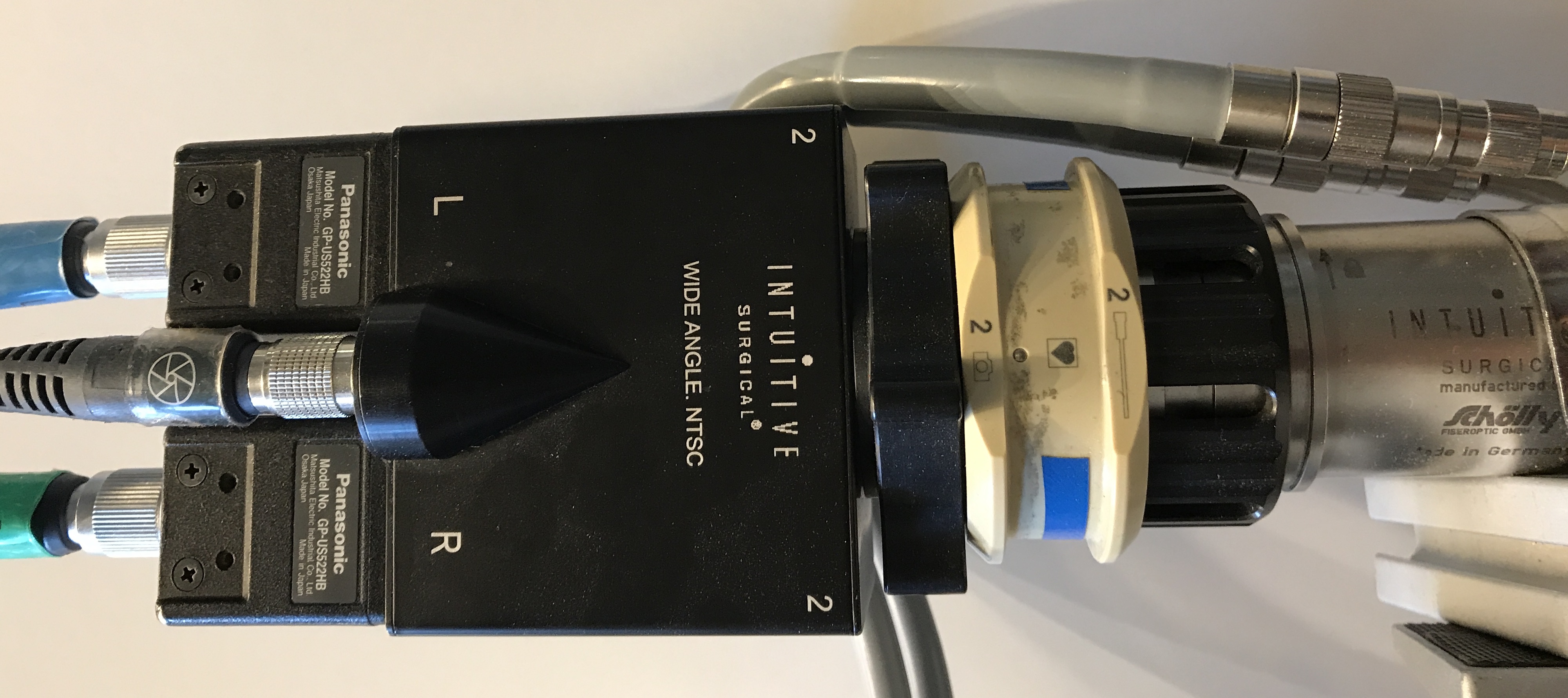
CCUs are in the middle, the endoscope focus controller is on top. A light source is below.
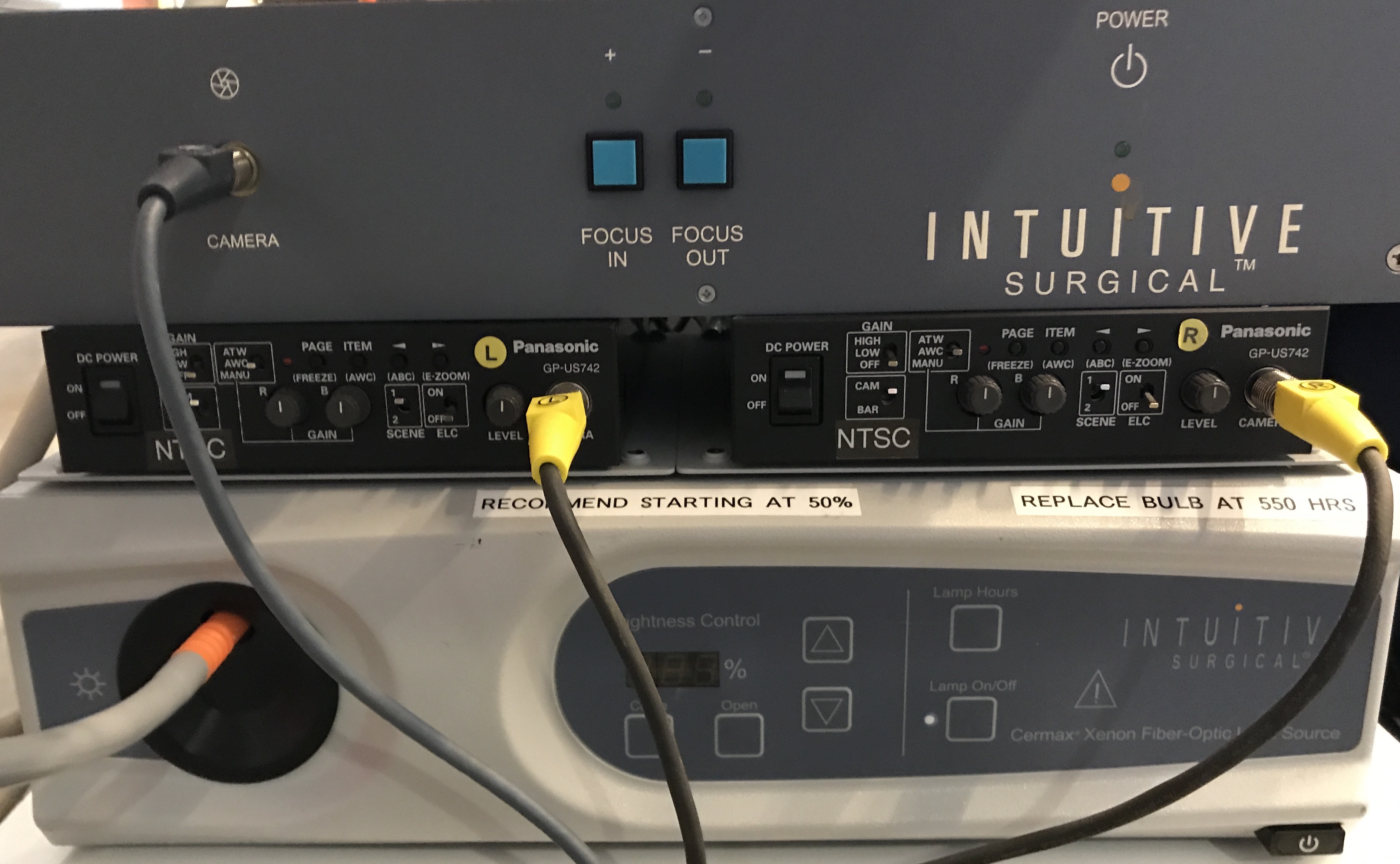
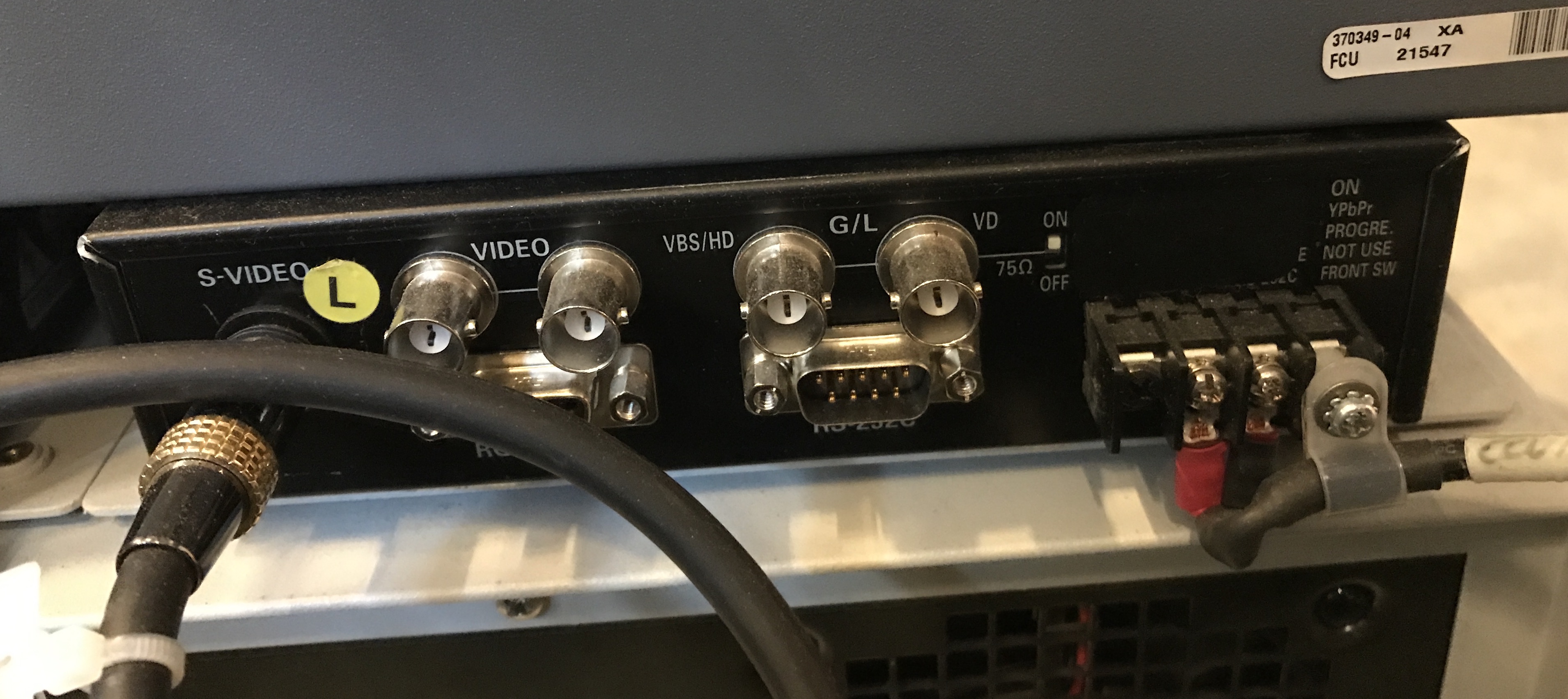
Intuitive started to release an HD endoscope along the da Vinci S (see FAQ for different generations of systems). The endoscope and mount is actually the same as the Standard SD endoscope but the camera heads are different. They still use a motorized mechanism for focus but the sensor now support full HD (1080x1920). To process the raw signal from the camera, there are also two CCUs. Intuitive used different CCUs over time. Some systems come with the Ikegami CCUs. The video output is SDI.

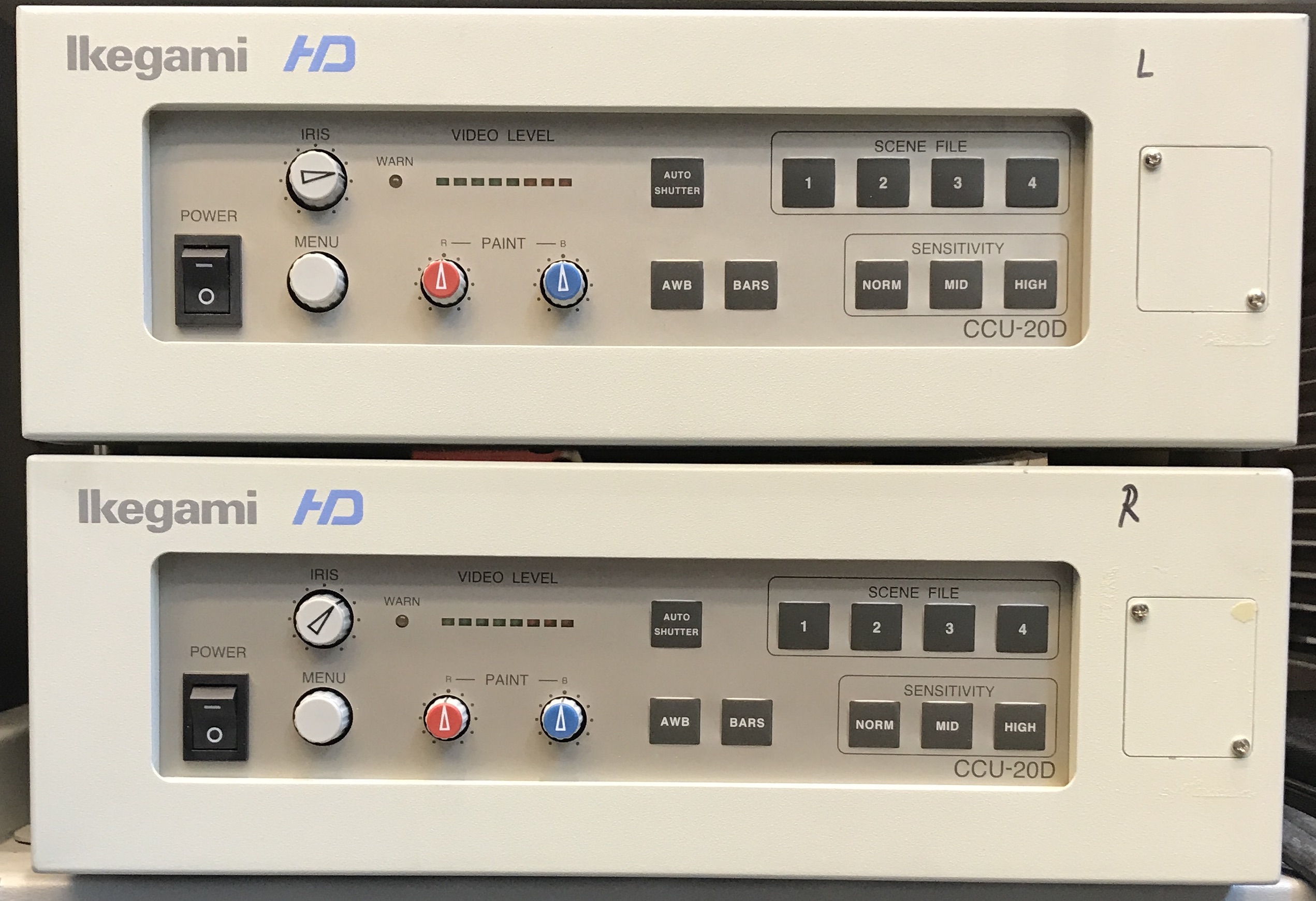

See Ikegami HD section, most of the system is similar except the cameras. Some systems come with the Panasonic Cameras. The video output is SDI.


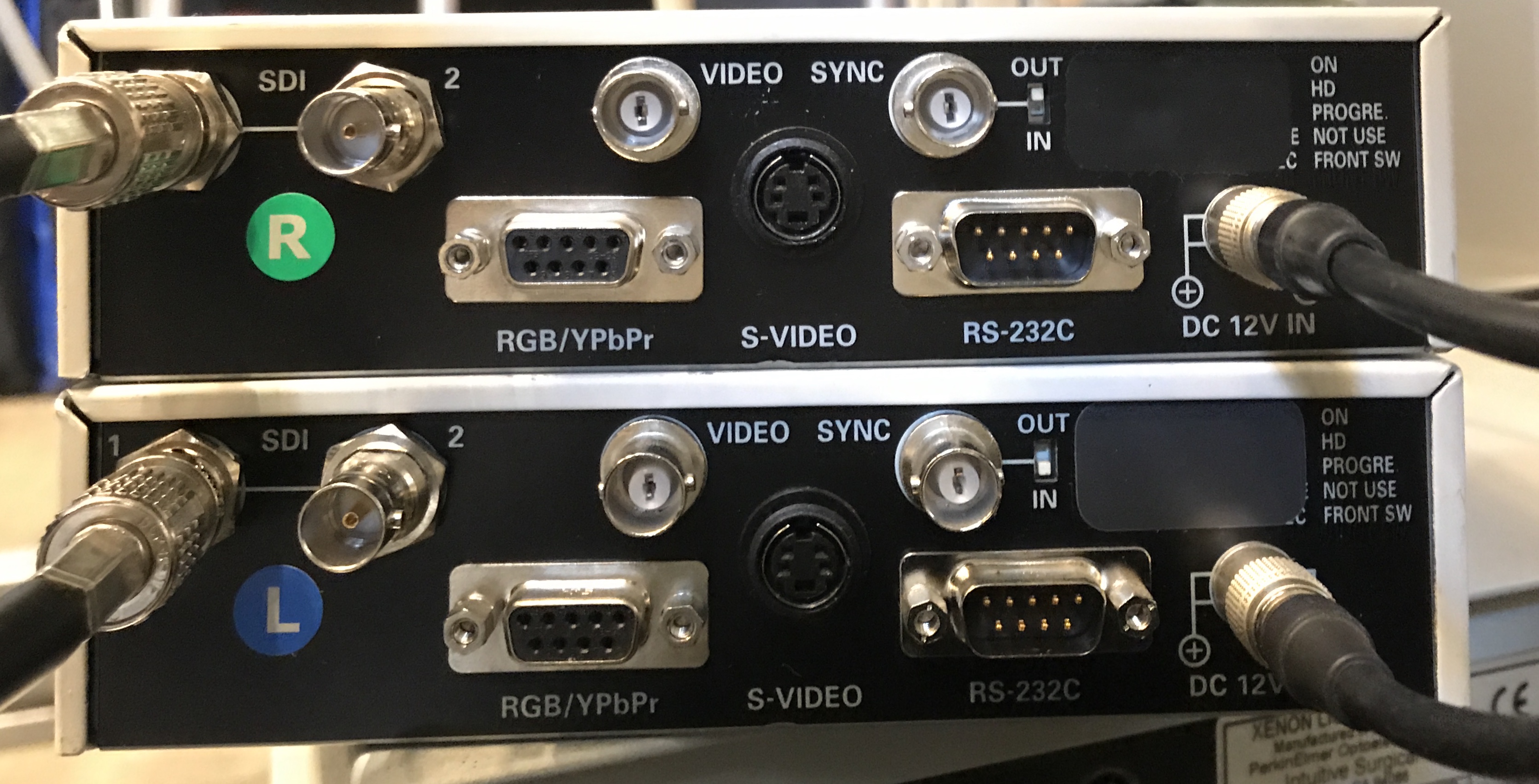
Contributions from the dVRK community can go here.
At the other end of the video pipeline, we have the stereo viewer. It can be either the HRSV provided by Intuitive or your own display (3D or not).
The da Vinci Classic came with two SD CRT (Cathodic Ray Tube) monitors, their resolution is 640x480. The connectors on the back of the monitor is not totally standard and each group will have to build a custom cable to provide a VGA interface. One can find instructions on the ISI Research Wiki [Password protected].
The da Vinci S consoles came with two higher resolution CRTs (1024x768). These monitors have a standard VGA input and you don't need any special adapter.
Some groups have replaced the CRTs in the HRSV provided by ISI with a pair of LCD panels. The main issue is to find the proper size of monitor, i.e. roughly 14" with 4/3 ratio and ideally a fairly high resolution.
- 2021: UBC used a pair of 14" monitor for CCTV from eyoyo. Resolution is 1024x768.
- 2018: CUHK used a pair of DELL monitors (1505FP). Resolution is 1024x768.
- 2016: JHU found some replacement parts for old laptops and LCD controllers that work fine (see ISI Research Wiki [Password protected]). Unfortunately, some of these parts are getting harder to find online.
CUHK HRSV:
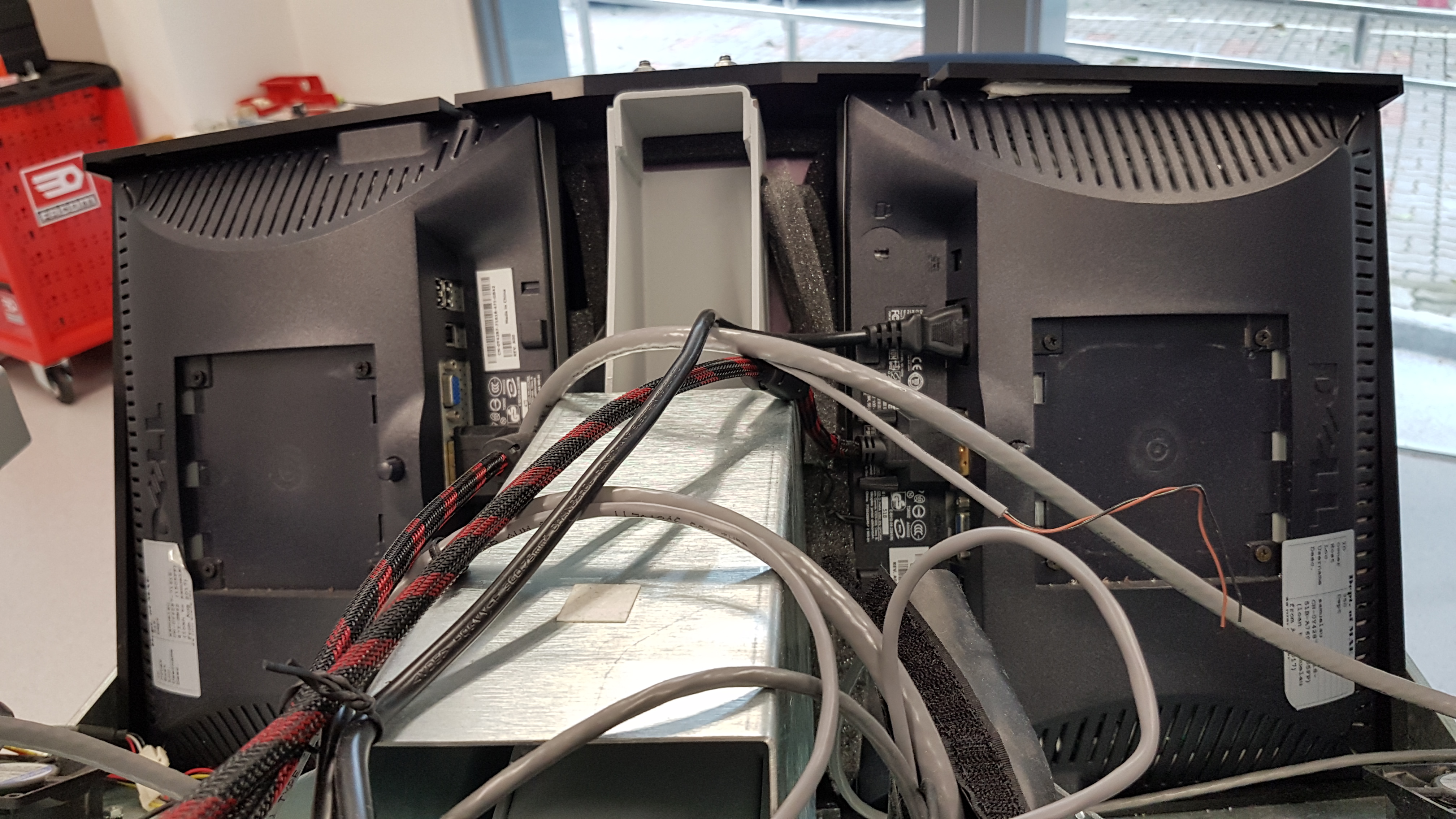
The hardware based pipeline is the simplest solution and likely the cheapest. It is based on off-the-shelf converters that can be placed between the CCUs and the monitors. The main drawback is that one can not modify nor process the videos coming from the CCUs before displaying on the HRSV monitors.
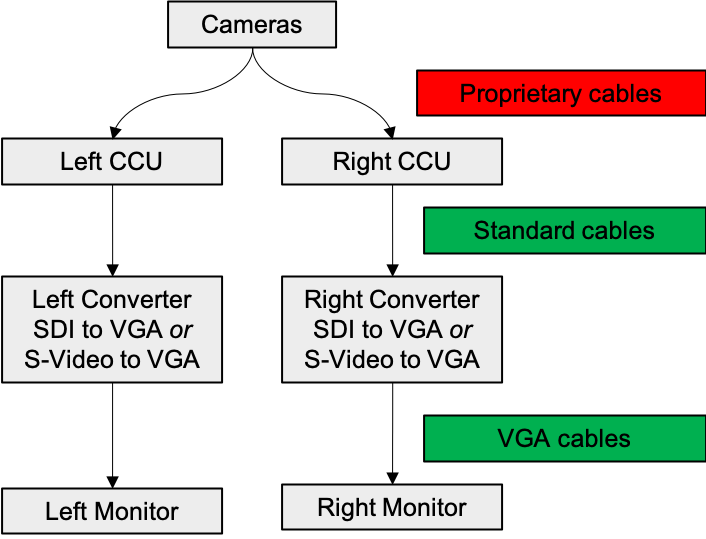
You will need some standard cables as well as a pair of video converters (one for the left video and one for the right video):
- S-Video to VGA, one could use: --- find suggestion from community
- SDI to VGA, one could use: --- find suggestion from community
If you need to process the video inputs (e.g. camera calibration, filtering, 3D reconstruction...) or modify the videos being displayed (camera distortion compensation, overlays, messages...) you will need to put a PC in the middle of the video pipeline. In this case, the main 3 "components" on the PC are:
- Frame grabbers
- Software
- Video output (most likely a graphic card with 2 extra outputs)
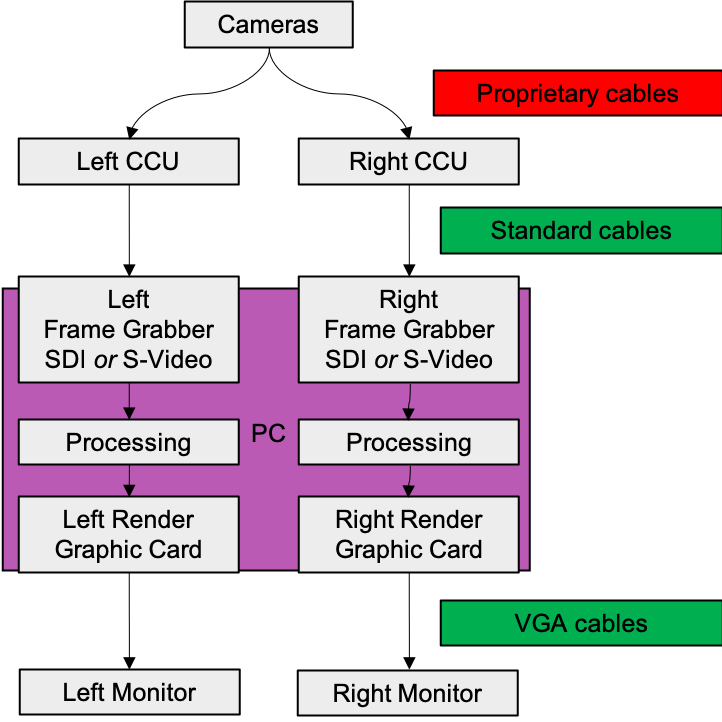
For the frame grabbers and software, you can find some documentation on the dVRK ROS GitHub repository.
Community
Getting Started
- First Steps
- Software installation
- Controller Connectivity
- XML Configuration
- Hardware Setup
- Calibration
- Classic/Standard
- Si
- Examples
Advanced
- Software Architecture
- Application Development
- Config File formats
- APIs
- UI Customization
- Teleoperation
- Kinematics Simulation
- Potentiometer Issues
- Development Branches
- Release Checklist
- Projects
- Controllers/versions
- E-STOP Wiring
- Full da Vinci System
- Head Sensor
- Foot Pedals
- Video Pipeline
- Instruments
Miscellaneous
- Frequently Asked Questions
- User manuals Classic Si
- QLA Heat Sink
- Build w/o ROS Linux Mac
- cisst
- JHU
Deprecated
